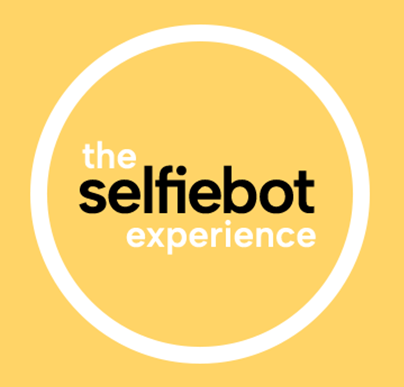How it all began
What made us start the improbable journey of making a robotic photo booth
Five years ago, we were asked to design and build a “photo booth”.
When I heard the phrase photo booth, the first thing that came to my mind was those old and massive contraptions we used to print passport-size photos, the ones I used to spot in random places around the city or in train stations.
To be honest, having focussed on designing interactive installations and large scale experiential activations, I knew little about the photo booth industry, how much these products had evolved and how popular and sophisticated they have become.
When we started researching the topic, we discovered how the classic “booth”, all of a sudden had entered the digital and social age. Just a simple Google search was enough to have a sense of how many design variations are constantly popping up.
There are now a vast range of products with a plethora of interesting features such as AR lenses, animated GIFs, boomerangs, stereoscopic images, green screen and 3D visual effects.
Most of these features are surely fads destined to fade, but some features such as SMS and email delivery methods as well as instant photo printing are actually useful to create a seamless and enjoyable experience for the end user.
Hundreds of companies worldwide, big and small, are now providing photo booth rental options with these features.
In time, we learnt that the “photo booth revival” started just few years ago and, unsurprisingly, boomed with the Instagram age. They are now used at live events and there are many reasons why they are useful including the ability to amplify the event online through the guests branded photos and as well as clever data capture tool for marketers.
After releasing our photo booth app and attending several live events where it was used, I was shocked to see long queues of people standing and waiting to snap a not-so-special branded picture. To be honest, at that time, for budget limitations / time constraints our photo booth app was pretty basic and had standard branded overlays a pretty average photo quality (with no external DSLR camera).
I couldn’t wrap my head around it. Why are they queueing for a picture that they could just take with their own devices? Is it because they expect a superior photo quality? Is the brand sponsoring the event so powerful and attractive? Is it just an opportunity to get a printed memory of the event with their family, colleagues or friends? Are the brand ambassadors so attractive and convincing?
Depending of the type of event the answers to those questions can vary but one thing was pretty clear to me. Photo booths evolved but there is still a lot of room for improvement, especially from a user experience perspective.
In particular, there were two main experience design flaws that struck my attention:
1) Most photo booths are static
The majority of photo booth are usually stuck in a corner for the whole event duration,
This means that they can have extremely busy peak times and hours of pretty much no activity.
Event managers needs to think about the best position to maximise foot traffic and capture attention but without being obstructive. And, of course, it needs to be close enough to a power outlet to work. The thing is, photo booths are usually the last worry for an event manager and they often don’t have time / headspace to think how to maximise the ROI of it, especially during the event bump-in. The question is, who is to pay to rent a machine that will be mostly stand unused for most of the event?
2) For most people, being pushed into taking a Selfie can be very off-putting
Don’t get me wrong, in certain contexts and events, having energetic promo staff trying to increase engagement can actually work. However, in other, more formal occasions such as corporate events, gala dinners and award nights being pushed to take a selfie is mostly considered an annoyance.
In addition, during the experience of taking a selfie, there are important psychological factors to consider such as the self-awareness of looking at yourself through the iPad screen (sometimes you don’t look as you hoped, especially after few drinks) and the embarrassment of being taking a selfie in a front of many other often judgemental humans watching you. The latter is particularly common and often overlooked.
Attempted solutions
Some companies are trying to tackle the lack of mobility of traditional photo booths through more portable, hand-held devices. Some of these products are really well designed but, I believe, these solutions can generate even more awkward experiences because they require a full-on interaction with the promo staff.
These roaming solutions have also the big limitation of lacking the ability to print (or they will have a printer far away from where the picture is taken). Photo prints are always a delight for the final user because guests can bring home a long-lasting physical memento from the event.
A better photo booth is not a photo booth
Noticing these limitations in photo booths led me to think we could design a better one, a portable solution able to capture the attention and foot traffic but limiting those awkward interactions with promo staff as much as possible.
The question was “What if a photo booth could autonomously roam around a venue and interact with the guests”? Maybe the answer was to focus less on how photo booths look now, and instead start sketching something from scratch.
That’s how the idea of Selfiebot was born.
In the next blog post I will go through the exciting struggle of making a roaming robotic photo booth.



